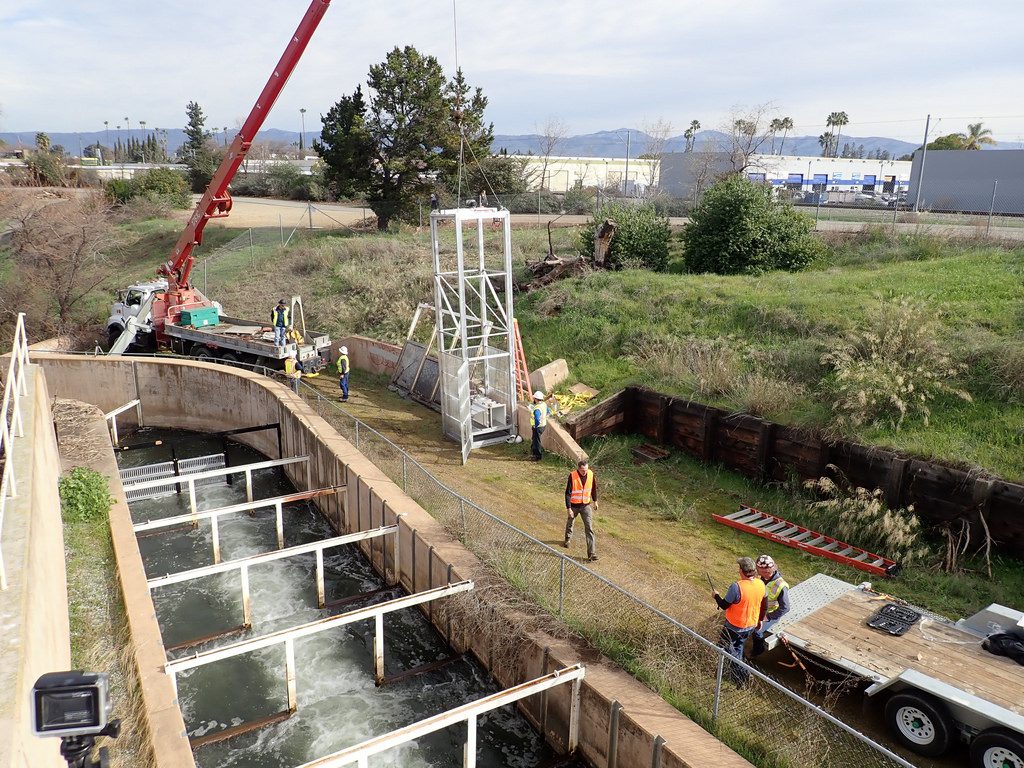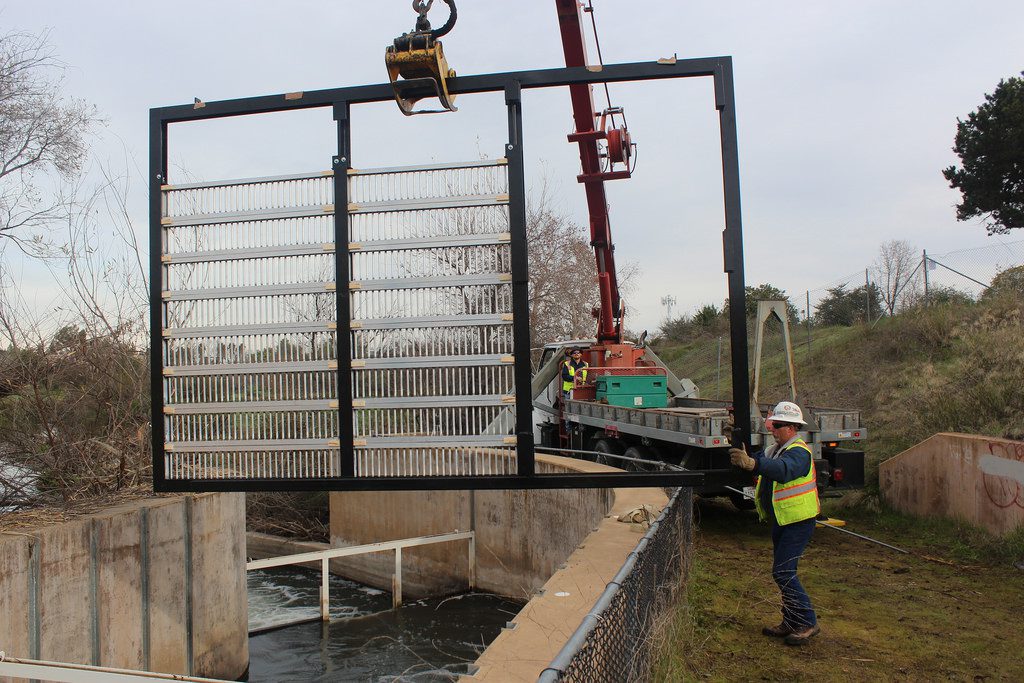Friday April 23, 2021

In today’s Flashback Friday we take a look back at one of our custom fabrication projects where we built a Riverwatcher fish-counting device at a fish passage ladder in Santa Clara, California.
Our fabrication team knows how to go big when it comes to creating custom fisheries monitoring equipment. Our latest mega-build is a giant lift system used to raise and lower a Riverwatcher fish-counting device at a fish passage ladder in Santa Clara County, California. A Riverwatcher uses an infrared scanner and video camera to capture images and data of every fish that passes through its tunnel. Riverwatchers are used all over the world to monitor fish passage and assess fish population sizes. The devices are often installed in fishways or can be paired with a weir at locations without an existing fishway. Biologists with the Santa Clara Valley Water District (SCVWD) are using a Riverwatcher to count fish like steelhead using a fish ladder to migrate up a Silicon Valley river. Large concrete fishways can present dangerous situations for biologists trying to monitor fish within the structure, and SCVWD wanted the ability to clean and maintain their Riverwatcher system without needing to enter the 15-ft.-tall fish ladder. Our fabrication team took on this challenge and created a 20-ft.-tall aluminum lifting system that we dubbed “the elevator” for raising the Riverwatcher up and out of the fishway with the push of a button.
There were many potential concerns that we took into consideration when designing the elevator, such as personnel safety, preventing delays to fish migration, and avoiding excessive water velocity, turbulence, or air bubbles around the Riverwatcher. We also kept installation in mind and created a structure that could slide into place without using any type of fasteners. This avoided drilling into the existing fishway, and staff did not need to enter the fishway to secure anything after installation. We also did not want to create any passage delays that could impose stress on migrating fish as they figured out how to navigate the steps of the fishway. Therefore, we oriented the elevator so that the water passing through the Riverwatcher would flow slightly faster than the water flowing around it, and the slight increase in water velocity could help fish easily find the entrance to the Riverwatcher. Finally, we needed to install the elevator in a location of the ladder with the least amount of turbulence or air bubbles, which could cause false detections in the Riverwatcher scanner and interfere with its functionality.
In addition to the elevator, we also built a 10-ft. by 10-ft. weir panel to hold the structure in place inside the fishway. To avoid modifying the fishway’s existing weir panel, we fabricated a replica and added slip fittings for the elevator to slide into. We also created a series of stacking picket weir panels that slide into the large weir panel, similar to wooden planks used in a flashboard dam. These stacking panels guide fish into the Riverwatcher with minimal obstruction to water flow, and biologists can easily remove them in response to changes in flow and gauge height, or can replace them with wooden planks to block more flow from passing through the weir panel. Changes in flow require the weir panel to be adaptable in order to find the right balance between water flow passing through and around the Riverwatcher, and to encourage fish to pass through the opening.

Transporting the elevator and weir panel to the fishway required some creative thinking. The weir panel was too wide and tall to lay flat, and the elevator was too tall to stand upright on the trailer. Therefore, the weir panel was placed upright on the trailer and the elevator was laid down next to it, which avoided the need for an oversize load transportation convoy. During installation, all components slid right into place with a perfect fit and the elevator’s lifting system performed as expected. The lifting system utilizes an electric winch and stainless-steel cable to raise and lower the Riverwatcher on a metal platform. We were also able to repurpose an existing solar panel array on the site to power the Riverwatcher’s 24-V computer. The uniqueness of the elevator required an extensive amount of coordination with SCVWD engineers. We hope that all the time and effort that went into designing and fabricating the elevator system will make it easier for biologists to effectively and safely count migrating fish with the help of the Riverwatcher. Check out this video of the elevator installation to see it in action!
This post featured in our weekly e-newsletter, the Fish Report. You can subscribe to the Fish Report here.
